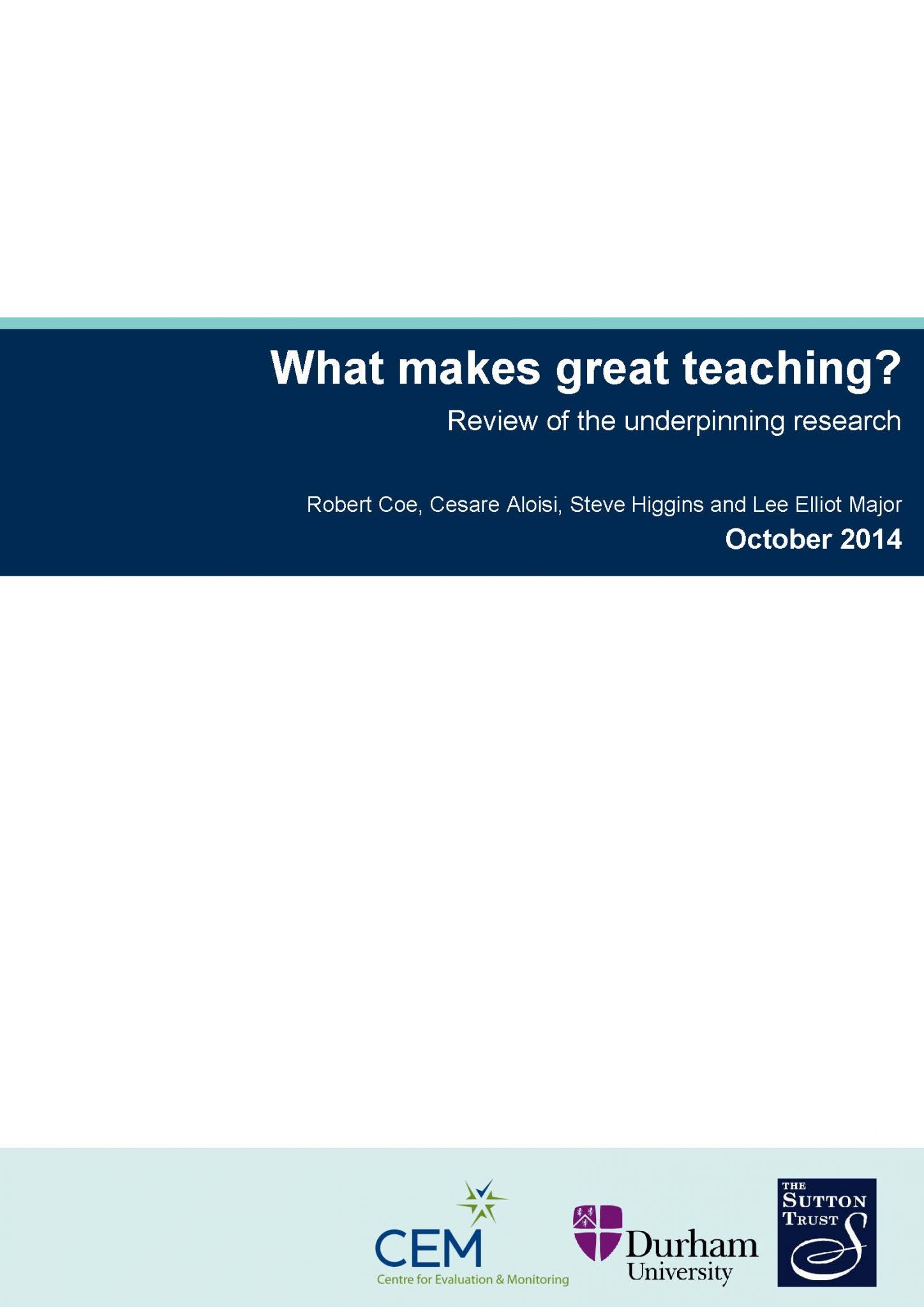Report Overview
This report reviews over 200 pieces of research to identify the elements of teaching with the strongest evidence of improving attainment. It finds some common practices can be harmful to learning and have no grounding in research. Specific practices which are supported by good evidence of their effectiveness are also examined and six key factors that contribute to great teaching are identified. The report also analyses different methods of evaluating teaching including: using ‘value-added’ results from student test scores; observing classroom teaching; and getting students to rate the quality of their teaching.
This report was written by Robert Coe, Cesare Aloisi, Steve Higgins and Lee Elliot Major.
The report has been read by over 115,000 people on this page, and attracted considerable media coverage. You can read much of the coverage on the right hand side of this page.
The two factors with the strongest evidence of improving pupil attainment are:
- teachers’ content knowledge, including their ability to understand how students think about a subject and identify common misconceptions
- quality of instruction, which includes using strategies like effective questioning and the use of assessment
Specific practices which have good evidence of improving attainment include:
- challenging students to identify the reason why an activity is taking place in the lesson
- asking a large number of questions and checking the responses of all students
- spacing-out study or practice on a given topic, with gaps in between for forgetting
- making students take tests or generate answers, even before they have been taught the material
Common practices which are not supported by evidence include:
- using praise lavishly
- allowing learners to discover key ideas by themselves
- grouping students by ability
- presenting information to students based on their “preferred learning style”



